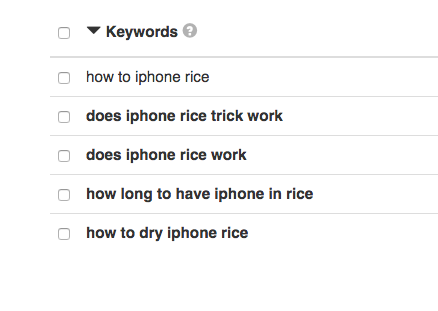Blog burnout is real. In today’s oversaturated market, content is everywhere, which makes it difficult for viewers to know where to go for the best possible quality content. Combine a super competitive market with an oversaturated one and producing great content that also attracts great traffic can seem impossible.
But impossible it is not.
It takes a bit of finesse and thinking outside the box. There is no one content-type that is the be-all, end-all answer to driving traffic to a site.
Two years ago, tons of social media marketers (and by extension, the brands they worked for) made a grave mistake when they started to realize that Facebook was rewarding video content on its Newsfeeds. What happened? Digital teams began producing and posting video content out the wazoo. According to Forbes, every second, a million minutes, or almost 17,000 hours of video content will cross the network by 2021.
Video was everywhere; for a hot second, it seemed like the answer. It was an exciting moment when visual content garnered hundreds of thousands of views. Many brands weren’t used to these types of numbers and it felt super promising. Yet it soon became clear that video was getting views but not translating to traffic. With news feeds suddenly saturated with video, it wasn’t plugging traffic back to the site, and since monetizing videos can be tricky and not always the main source of money for brands (unless we’re talking about YouTube), video initiatives as a sole driver of traffic fell flat. This is not to say video isn’t a good content type that brands can use. Rather, it’s impossible to rely on solely one type of content to do all your traffic-driving.
Don’t let your digital strategy fall flat.
Check out these 10 content types that are known for driving traffic.
1. Long-form content: in-depth posts with 2,000 words minimum
While there is occasionally a place for short blog posts, they are going the way of the dinosaurs. A short blog post was originally marketed as giving you all of the necessary information in one place and in a concise format. Unfortunately, chances are “concise” does not actually explain everything that needs to be explained. Enter long-form content. This type of content should seek to bring a tremendous amount of value to the reader, to establish and maintain your site’s credibility, and provide practical, actionable, and useful information to the users who seek it.
Additionally, long-form content that’s more detailed is more likely to be shared on social. Long-form content doesn’t just perform well on social shares either; it’s also been proven to reach maximum organic traffic. Are you wondering why?
Long-form content inherently adds more value to the reader’s experience. With more in-depth explanations and more topics within a niche covered, that content is most likely to be rated as top-quality.
2. Tutorials: Explaining how to do something

(Photo credit: KeywordTool screengrab)
One of the main reasons people use the internet is to learn and get new information. Tutorials are the most basic content types as it’s typical to ask questions of search engines. In 2017, the top 10 searches were all phrased, “What is…?” They ranged from “What is net neutrality?” to “What is Bitcoin?” Just behind “what is?” searches are “how to” searches. Let’s take the example of the following key phrase: “iphone rice.” This keyword refers to the trick of setting your phone in a package of dry rice after the phone has been exposed to water damage. Using KeywordTool.io, we see that top auto-filled questions for this keyphrase are “does iphone in rice really work,” “does wet iphone rice work,” “how long iphone rice,” and “how to iphone rice.”
This keyword is the perfect opportunity for an SEO post entitled How to Fix Your iPhone’s Water Damage With Rice. In fact, the first post that pops up when you search “how to iphone rice,” is a post by MacWorld entitled, “How to dry out & fix a wet or water-damaged iPhone.”
Tutorials allow the writer to position himself or herself as an expert in a particular niche; they also provide the viewer with helpful information that aids them in accomplishing something.
By using tutorials as a main content type, users know exactly what they are getting when they visit your site. This can be crucial to standing out in an oversaturated market. If your site is known for its long-form, in-depth tutorials on a particular subject, then many viewers might deem your content better than the competitors. Tutorials—in-depth, high-quality ones—are one aspect to gaining a loyal, trusting following.
3. Data-driven anecdotes: an original story, backed by facts
You’ve seen these kinds of posts where a person extols knowledge of how they did something that seems incredible. For example “How I Built a $5,000/mo Freelance Writing Business in 4 Months” by Jorden Roper. It’s anecdotal in that it details the writer’s personal experience: she really did build a $5,000 monthly freelance writing business in just four months. But more so than even her personal experience, it’s driven by data.
The writer uses actionable advice and even provides the reader with a month-by-month breakdown of how she grew her freelance writing business. Something like “How I Became a Freelance Writer” is sort of on the right track, but it’s too vague and likely doesn’t have as much actionable advice as something as specific as Jorden Roper’s post. That post is niche, actionable, driven by the writer’s personal experience, and supported by data which viewers can gain value from.

4. Resource compendiums: everything a user needs in one place
Second to using the internet to learn something is the desire to get more information. Resource posts are a great way for bloggers to form a community, cross-promote traffic, and share the wealth of knowledge. Also known as link-sharing posts, resource posts provide users with a list of information and where to go to find out more. Writers carefully curate their resources, pulling from other content, and arranging it into a list format.
For example, 10 ebooks you have to download if you’re starting a WordPress blog. Or 30 websites that help you self-learn HTML. Instead of requiring the reader to do a ton of digging, all of the necessary resources are right there in one compendium post. It’s convenient for the user, and not to mention shareable.
After building a resource post, consider reaching out to the companies you’ve cited. Chances are they will want the promotion and they will do what they can to promote the post and spread the word. This computes to big traffic for your site, especially if more than one of the resource companies is helping drive traffic back to that post.
5. Visuals: infographics show, not tell
The internet is a visual place. It makes sense that images are an alternative way to share information perform well. Infographics are digestible, shareable, and quick, making them great for social shares. In fact, according to the 2018 Social Media Marketing Industry Report, 80% of marketers use visuals in their social media marketing.
Why? Let’s look at the numbers: Tweets with images get 150% more tweets than those without; Facebook posts with images receive 2.3 times more engagement than those without. These statistics aren’t just true for social media channels either; the statistics hold when it comes to website traffic as well.
Websites that used infographics regularly grew their traffic an average of 12% more than those that did not. Infographics can be used in any type of post, then again on social media to promote the post and garner shares. The numbers don’t lie: users are more likely to care if there are digestible visuals. Check out our post on infographic resources for non-profit businesses.
6. Problems & Solutions: troubleshooting and configuring issues
Think of a problems & solutions post as one that helps users troubleshoot and configure issues. Rather than a glorified tutorial, problems & solutions posts don’t show the whole tutorial. Instead, these types of posts walk the user through a frequently-asked question or a common issue. It should be an issue the writer has also experienced. The internet is full of problems; nothing ever goes exactly as planned, whether it’s coding with HTML or sending out your first email marketing newsletter for the first time. This is where the problems & solution post comes in; it offers a solution in the face of a frustrating issue.
Here’s a good example of a successful problems & solutions post: 5 Common Struggles With Employing Email Marketing and How to Overcome Them. The key here is “how to overcome them”. From the get-go, the user knows what they are getting when clicking on this post: common struggles and then solutions about how to overcome them.
Now for a bad example of a problems & solutions post: “3 Common Macbook Problems.” Does anyone really want to read about common problems without the text also giving a solution? Probably not. Traffic for this post would be far greater if solutions were cited, that way it’s clear the post is offering some sort of tutorial. Additionally, “Macbook problems” is too vague an issue. Are the problems narrowed down to when a person updates to a new OS? Or when trying to download an application off the internet?
These posts need to be specific so users know exactly what they are getting out of them even before clicking.
7. Guest posts: articles written by other voices in the field
You know how podcasts often feature different guests on each episode? That’s exactly what guest blog posts do. They allow you to enlist the help and expertise of other voices within your field. It also guarantees your blog displays fresh content and unique perspectives.
Employing outside experts and showcasing different voices is a great way to cross-promote and grow your audience. Not only will you promote their article on your site but they will likely also promote their article. If they have a large social following, there’s a large likelihood that some of that audience will cross-over and follow you as well.
8. Ebooks, a freebie that grows your numbers
ebooks are a hot new strategy in digital marketing that allow a blog’s email marketing and subscriptions to grow quickly. By offering a freebie, like a 20-page ebook that makes sense for your niche and will attract lots of readers, users will be more likely to sign up for your email campaigns or subscribe to your website. The more subscriptions you acquire through the offering of the free (or discounted) ebook, the more your site grows in unique users, page views, and ultimately, traffic.
To make your ebook, combine a few of the core points of a few blog posts into one PDF. Take the site Freedom With Writing for example: this blog aims to connect freelance writers with paid publishing opportunities and publishes posts like “21 Blogs & Websites That Pay Writers for Guests Posts ($50 to $300).” In order to push these kinds of posts, FWW uses the creation of multiple ebooks to gain new subscribers. All new visitors have to do is submit their email to the email marketing subscription, then they can download an ebook on The Case Study Guide to Freelancing, a complete compendium of which publishers are open to freelancers and how much they pay. That ebook has a tremendous amount of value to freelancers, so it’s a no-brainer to join the emailing list. Bam! Freedom With Writing just scored a ton of new subscribers, widening their audience tenfold.
9. Case studies, this is what worked for me
While problems and solution articles are great for personal or business use, case studies are more specific. As Business A how were you able to help Business B achieve their goals? They are easy to write because these posts detail the writer’s organizational experience and as there is not much research involved.
They are also widely trusted by readers because they contribute to social proof, a psychological term for “jumping on the bandwagon.” If something has worked for someone else, especially if it is an organization similar to yours, it becomes more enticing.
So how can you reap the benefits of a case study? Check in with your client list for proof of who has been most successful in using your product. If that client is willing to detail how they used your product effectively you will just need to put all of the material together for your case study.

10. Social media posts, promoting content
Now that you have nine other great content ideas for your website, the last step is to spread the word. Social media may not be a “content type” to utilize on your actual blog. But from the sheer amount of brands using social platforms and email campaigns to promote their content, we know how effective it can be. Email campaigns and social media as a means of promoting your website and growing your business are the main modicums of website growth nowadays. In fact, 52% of website shares come from mobile traffic, while 43% happen on desktop computers.
Conclusion
The most effective way to avoid blog burnout is to create different kinds of content. Rather than relying on one type of post all the time, switching things up keeps your readers engaged. And keeps you, as the writer and builder of the content, on your toes thinking about content from different points of view.
And remember: different content types have different advantages but consistency is always key. Switch things up and see how your numbers grow.
You May Also Like

Having a website is an absolute necessity for any business. Gone are the days when you could simply update your website once and forget about it for months on end. In today’s ever-changing digital landscape it is important to constantly track and measure how well your website performs, as well…
read more >
Thomas Bertram (T. Bert) Lance famously said, "If it ain't broke, don't fix it." Unfortunately, T. Bert Lance couldn’t foresee the future. He didn’t know that over 94% of Americans would be on the internet by 2024. If your website doesn't receive periodic updates or isn't accessible, users can become…
read more >
